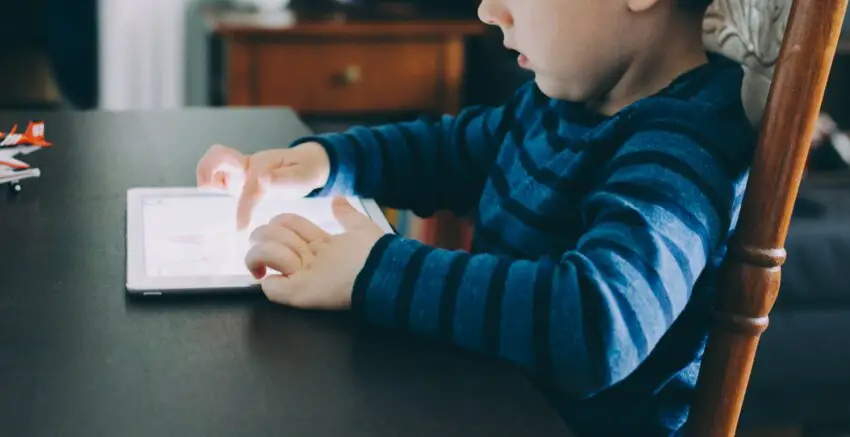We may earn money or products from the companies mentioned in this post.
Education Gamification
What is Gamification?
Gamification is the use of game design foundations with non-game conditions to heighten user engagement, motivation, and productivity. Essentially, gamification transforms learning into an interactive and enjoyable experience. By integrating elements like leaderboards, rewards, point systems, and challenges, gamification makes education more compelling for students from K-12 through higher education. In our tech-driven world, educators have access to innovative tools that make implementing gamification in the classroom easier than ever. This approach effectively captures students’ attention by merging the educational process with fun and interactive elements.

Gamification in Education: Why is it Important?
Gamification in education is important because it simply makes learning fun. By making learning enjoyable, gamification helps alleviate the stress and anxiety often associated with traditional learning methods. When students are able to find joy in their learning process, they are more motivated to persist in their studies. This educational approach fuels students’ motivation to continue learning because it provides immediate, and sometimes tangible rewards for task completion, such as earning points, unlocking achievements, or climbing leaderboards. This instant gratification, similar to the rewards in gaming, encourages students to stay engaged and committed to their studies. Additionally, it fosters active learning, as students are more likely to partake in critical thinking and or problem-solving when learning is in the form of a game, rather than passively listening to a lesson. Furthermore, gamification fosters essential skills that students can carry with them throughout their lives, including collaboration and self-confidence in their work.
How is Technology Advancing Gamification in the Classroom?
Technology has significantly enhanced the implementation and effectiveness of gamification in educational settings. Let’s take a look at Kahoot, for instance. Kahoot is an online game platform that allows you to create and or play interactive quiz games. Kahoot is a great example of how technology is advancing gamification in education, as it easily allows educators to customize each quiz game based on the lesson that they are teaching. Moreover, since Kahoot is an online game students have the ability to access the game from any device.
Other online apps such as Duolingo and Quizlet also exemplify how technology is advancing gamification in education. Duolingo is a language-learning app that makes learning new languages fun and accessible. It offers courses in a wide range of languages that consist of small lessons which incorporate gamification elements. People engage in interactive exercises, such as speaking, listening, translation, and multiple-choice questions. Duolingo utilizes features like streaks, XP points, levels, and rewards to motivate learners and track their progress. The app’s engaging approach has made it widely used by people of all ages. Quizlet is an online learning tool that allows people to make their own custom flashcards, or study other sets made by other users. Quizlet also incorporates gamification elements such as games that integrate flashcard sets. Gamification in these examples, not only makes learning more fun, but it also motivates users to continue studying, and retain the information that they are studying.
that makes learning new languages fun and accessible. It offers courses in a wide range of languages that consist of small lessons which incorporate gamification elements. People engage in interactive exercises, such as speaking, listening, translation, and multiple-choice questions. Duolingo utilizes features like streaks, XP points, levels, and rewards to motivate learners and track their progress. The app’s engaging approach has made it widely used by people of all ages. Quizlet is an online learning tool that allows people to make their own custom flashcards, or study other sets made by other users. Quizlet also incorporates gamification elements such as games that integrate flashcard sets. Gamification in these examples, not only makes learning more fun, but it also motivates users to continue studying, and retain the information that they are studying.
Another popular example of gamification in education is Minecraft: Education Edition. This is a classroom-friendly version of the popular sandbox game Minecraft, that is designed to promote creativity, collaboration, and problem-solving in an educational environment. It provides a safe and engaging platform where students can explore, build, and learn in a virtual world. There are many lessons that educators can utilize on Minecraft: Education Edition that align with many different subjects like history, mathematics, science, art, and even coding. Minecraft: Education Edition is a great example of gamification in education because it allows students to learn in a fun and laid-back environment, all while collaborating and problem solving with one another.
Similar to Minecraft: Education Edition is Scratch. Scratch is a free, block-based visual programming language and online community developed by the MIT Media Lab. It is another great example of gamification in education, as it is designed to make programming accessible and fun for children and beginners.
Interactive Learning Platforms
If you have ever taken an online college course, you have probably used a technological learning platform such as Moodle, Blackboard, or Canvas. While  these platforms are typically used to assign and submit homework or lectures, you may be surprised to hear that they also utilize gamification. For example, these platforms allow students to gain badges or rank up on a leaderboard for completing tasks.
these platforms are typically used to assign and submit homework or lectures, you may be surprised to hear that they also utilize gamification. For example, these platforms allow students to gain badges or rank up on a leaderboard for completing tasks.
Gamification is also effectively employed through platforms like Classcraft. Classcraft integrates game-like elements into the learning environment. It transforms traditional educational settings into an immersive simulation game where students create avatars, embark on quests, and earn experience points for completing tasks. Educators have the ability to customize their teaching methods in Classcraft, allowing them to further address certain needs of their students. By incorporating customizable avatars, team-based challenges, and an evolving game narrative, Classcraft engages students in a way that enhances motivation, collaboration, and overall learning experience.
Tracking and Analytics
Technology has assisted in advancing gamification in education by allowing tracking and analytics to be easier than ever before. Tracking and analytics are crucial components of gamification, especially in educational settings, as they provide valuable insights into student engagement, progress, and performance. Analytic tools allow educators to gauge how often students are interacting with gamification elements, which elements are most engaging, and which elements need improvement. Additionally, analytics allow students to reflect on their own progress. Self-reflection has the ability to encourage a growth mindset to continue tracking their achievements.
To Summarize…
Gamification is something that is pivotal in education, as it simply makes learning fun for students of all ages. Moreover, technology has been essential in advancing gamification, providing educators with innovative tools to enhance their teaching methods, and allowing students to access these platforms from all over the world. It harnesses the power of technology to make education more dynamic and engaging, equipping students with essential skills and fostering a love for learning. As technology continues to evolve, the potential for gamification in education will expand, offering even more opportunities to create enriching and effective learning experiences.
You Might Also Like – The Effects of Online Education


